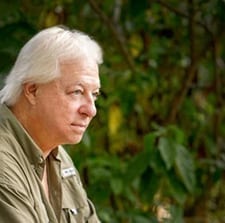Spring’s Early Arrivals
February 3, 2017By Tom Poland
Essential Southern Flowers
The trumpeters of spring arrived ahead of schedule. From the ground burst daffodils, those green-and-yellow harbingers of spring. The warm spell a few weeks back ago must have accelerated things. I don’t generally see them until February is well underway. Though it’s usually cold when they bloom, daffodils provide the first sign that spring is coming. For sure, more cold weather is on the way, and who knows (weather folks don’t) we may even get a snow. Don’t expect cold weather to end until pines cloud the sky with yellow pollen and hardwoods bud out. Then you know spring is here, but it’s daffodils first give us hope that winter is fading.
A member of the genus Narcissus, daffodils go by other names. My mom often called them jonquils. I’ve heard people refer to them as narcissus too. Whatever you call them, they’re here. This past weekend I explored Edgefield County and on my drive down highway 378 through McCormick County on into Georgia, I saw daffodils everywhere. But some places you can always count on seeing them, and those two places are old churches and abandoned home places.
Right now is a good time to make a daffodil drive. Get off a state road onto an old graveled county road. Then find your way onto a bumpy road scraped out of the ground and at its end you may find an old church sitting there all alone. Walk out to the cemetery. Maybe back near a line of woods you’ll find them. Green clumps of daffodils pulled over a bit by their golden trumpet-like blossoms. And here and there you see small colonies of them scattered throughout the cemetery.

After a bit of old tombstone reading, you get in the car and get back on that dirt road that takes you to the graveled county road where you seek yet another dirt road. And up ahead to the right you see one. Turning down it you come to a bend where old oaks stand with a wide space between them, wide enough to have once accommodated a house. Looking closely, you see some old stones that don’t quite seem to belong there. In some tangled vines you spot something white with a bit of red on it. Time to park and explore. Here and there you see shards of old pottery, bits of glass. Maybe an old mule shoe. That white and red thing? It’s the remnant of an old white enamel pot, a chamber pot. What old folks called a slop jar. Then back of the big oaks you see a bright golden clump of flowers. Daffodils. Think of them as essential Southern plants whose splashes of yellow and green transport our thoughts to dogwoods, wisteria, and azaleas.
Daffodils are everywhere but I best like to find them in the country. Seem more natural there. That’s just where they belong. When you see them in the city arranged all orderly, it just isn’t the same. One of the most nostalgic settings you’ll see is a large field of daffodils in bloom with an old farmhouse or tenant home in the background. The rusty roof and vintage clapboards, all gray and brown make a nice contrast. Together, they give us basic colors of the Earth and a setting straight out of Americana.
Daffodils, jonquils, narcissus … They mean more to me than the stars of winter, camellias, which have their own societies and clubs. Not to be outdone, daffodils have their own society too. The American Daffodil Society promotes itself as the United States Center for Daffodil Information. If you’re interested in checking out all things daffodil, at daffodilusa.org you can find answers and more. Some of the information is quite interesting. Squirrels, for instance, won’t eat daffodils because the bulbs and leaves contain poisonous crystals. The rascals will dig up the bulbs though.
Daffodils can grow anywhere in the country, but I think of them as belonging to the South. It’s here where three distinct memories of daffodils blossomed. My Grandmom Poland would cut them and put them in vases with blue food coloring in the water. The blossoms would soon be etched with delicate blue-green lines. Across from Dad’s old shop was a large field of daffodils near a blacksmith shop. It was a sight to behold. And down on Granddad Poland’s farm was another stretch of daffodils that pleased the eye.
Daffodils are here to stay. If daffodil bulbs find themselves in good growing conditions, they will outlive us all. They’ll keep coming back each year and spread out more and more. I like the sounds of that. The daffodils we plant while we’re here may be the daffodils others visit decades from now. If the future of our homes is to become old home places, no finer flower than daffodils could commemorate their memory.
Visit Tom Poland’s website at www.tompoland.net
Email Tom about most anything. [email protected]
Tom Poland is the author of twelve books and more than 1,000 magazine features. A Southern writer, his work has appeared in magazines throughout the South. The University of South Carolina Press released his book, Georgialina, A Southland As We Knew It, in November 2015 and his and Robert Clark’s Reflections Of South Carolina, Vol. II in 2014. The History Press of Charleston published Classic Carolina Road Trips From Columbia in 2014. He writes a weekly column for newspapers in Georgia and South Carolina about the South, its people, traditions, lifestyle, and changing culture and speaks often to groups across South Carolina and Georgia, “Georgialina.”
![]()














